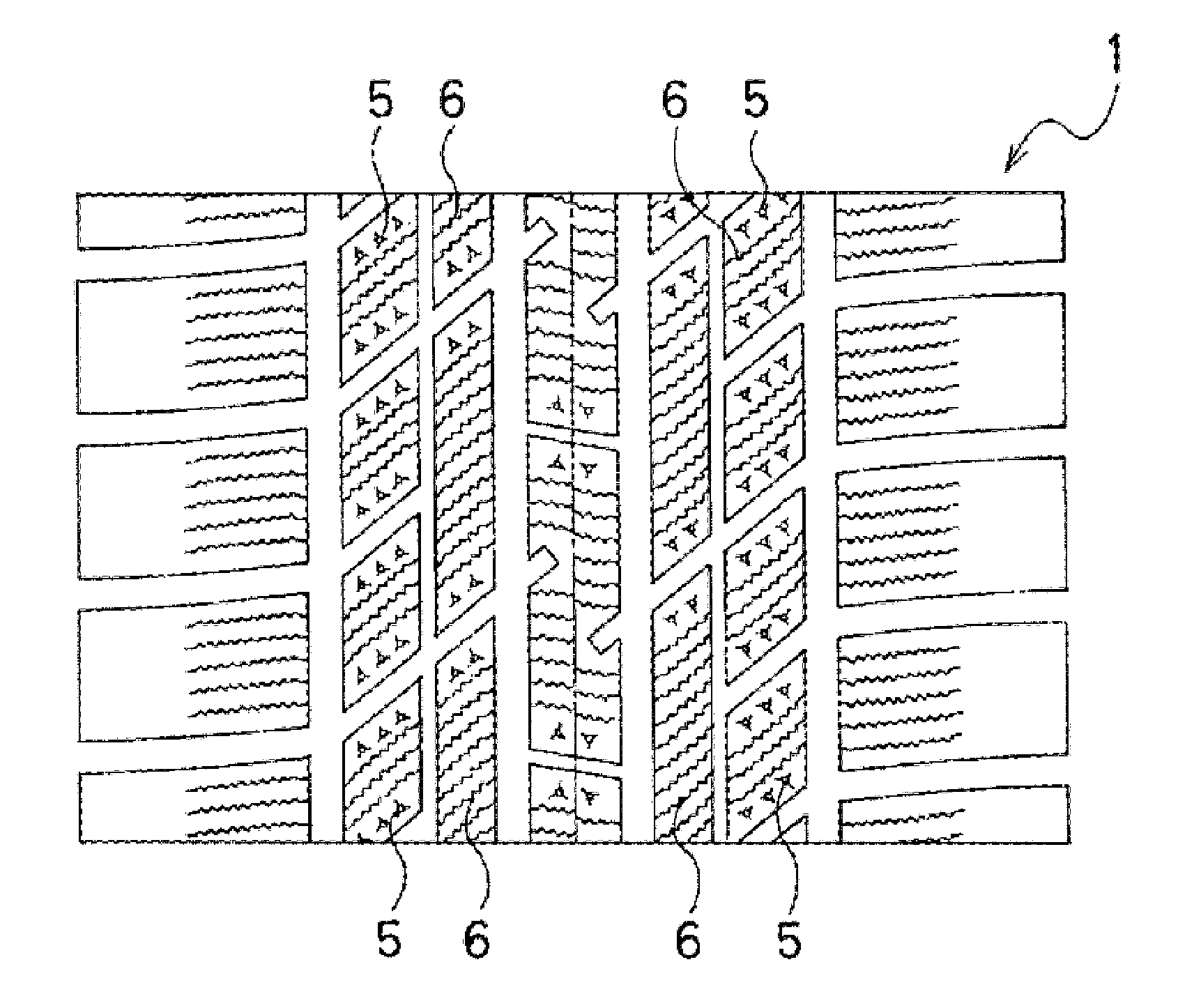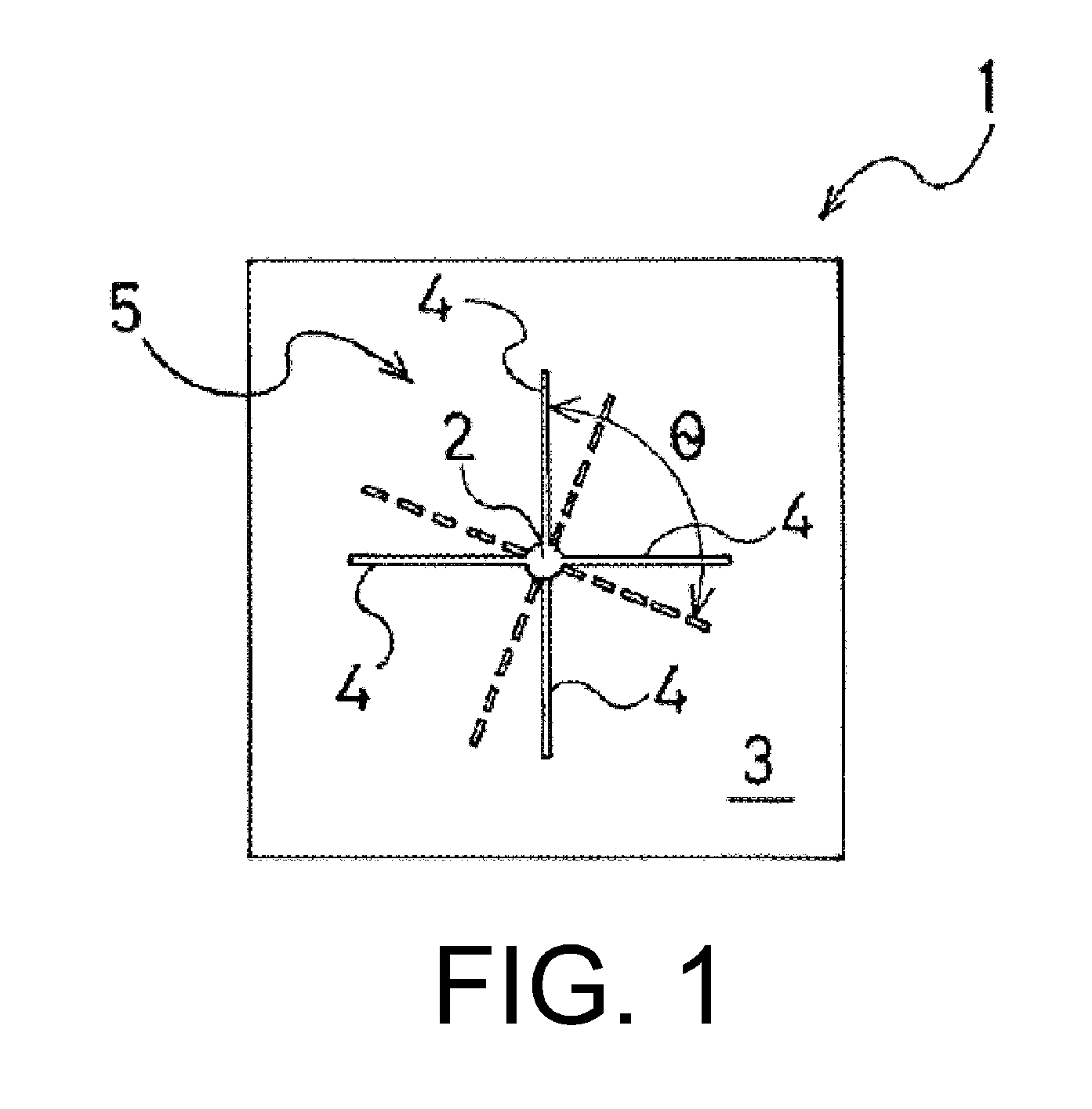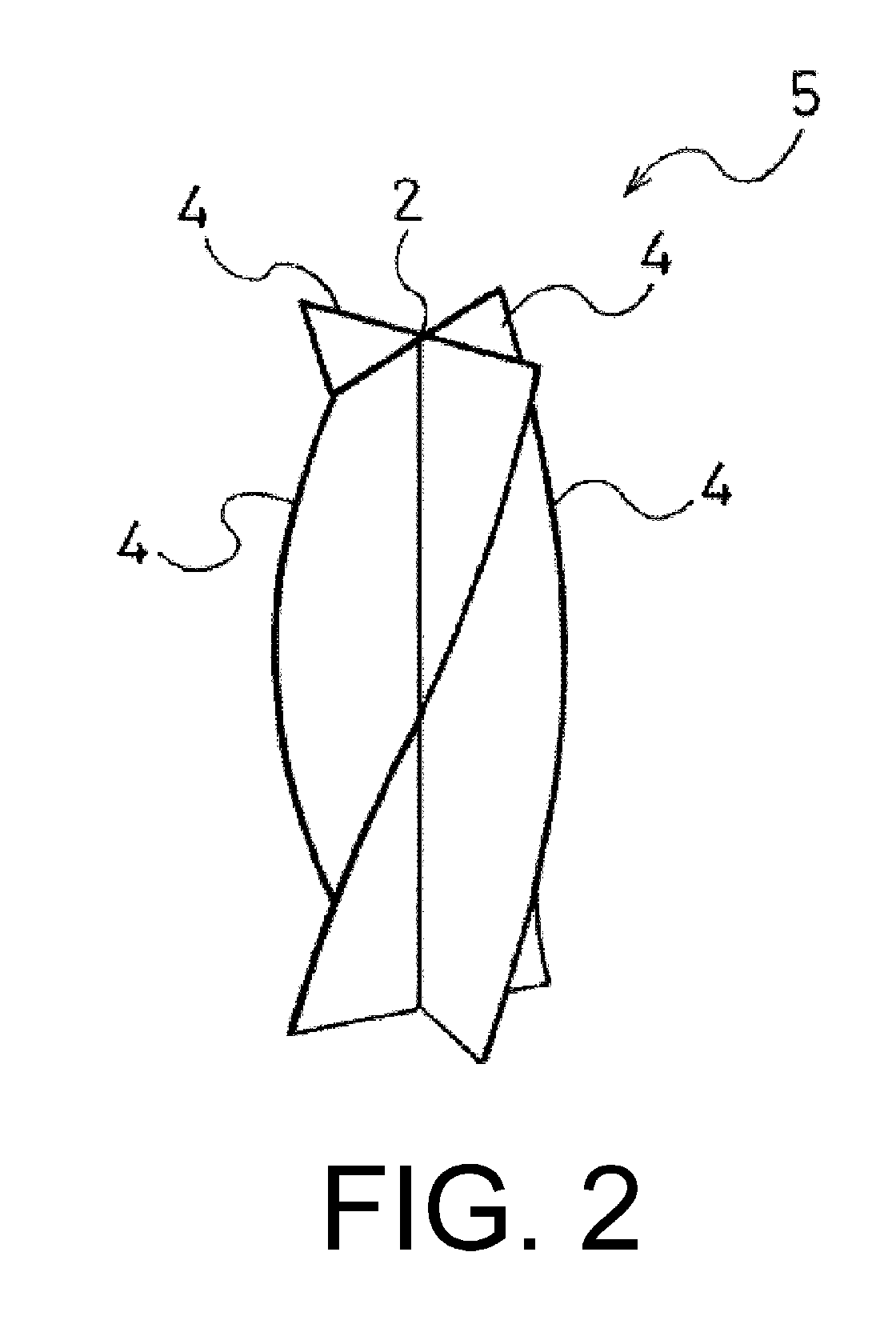Pneumatic tire
a technology of pneumatic tires and treads, applied in the field of pneumatic tires, can solve the problems of reducing the rigidity of treads, affecting steering stability and braking ability, and affecting the stability of steering, so as to suppress the decline in tread rigidity, improve the cubic capacity of closed sipes, and enhance water absorption.
- Summary
- Abstract
- Description
- Claims
- Application Information
AI Technical Summary
Benefits of technology
Problems solved by technology
Method used
Image
Examples
examples
[0038]Tires of the present technology (Working Examples 1 to 8) and comparison tires (Comparative Examples 1 to 4) were fabricated having a tire size of 195 / 65R15 91Q and the tire pattern illustrated in FIG. 6. Note that in FIG. 6, an example is illustrated in which three of the cuts 4 of the closed sipe 5 are provided.
[0039]In the Working Examples, the closed sipe 5 had a form wherein the cuts 4 extend in a radiation direction from a center axis that extends in the tire radial direction, and terminate in the land portion; and the small hole 2 was formed on the center axis. Each of the closed sipes 5 had a common depth of 7 mm and each of the cuts 4 had a common thickness w of 0.5 mm. Tires of Working Examples 1 to 8 and Comparative Examples 1 and 2 were fabricated wherein the number of cuts 4, the twist angle of the cuts 4, the diameter d of the inscribed circle of the small hole 2, d / w, the presence of the sipe 6 extending in the tire width direction, and whether the closed sipe 5...
PUM
 Login to View More
Login to View More Abstract
Description
Claims
Application Information
 Login to View More
Login to View More - R&D
- Intellectual Property
- Life Sciences
- Materials
- Tech Scout
- Unparalleled Data Quality
- Higher Quality Content
- 60% Fewer Hallucinations
Browse by: Latest US Patents, China's latest patents, Technical Efficacy Thesaurus, Application Domain, Technology Topic, Popular Technical Reports.
© 2025 PatSnap. All rights reserved.Legal|Privacy policy|Modern Slavery Act Transparency Statement|Sitemap|About US| Contact US: help@patsnap.com



